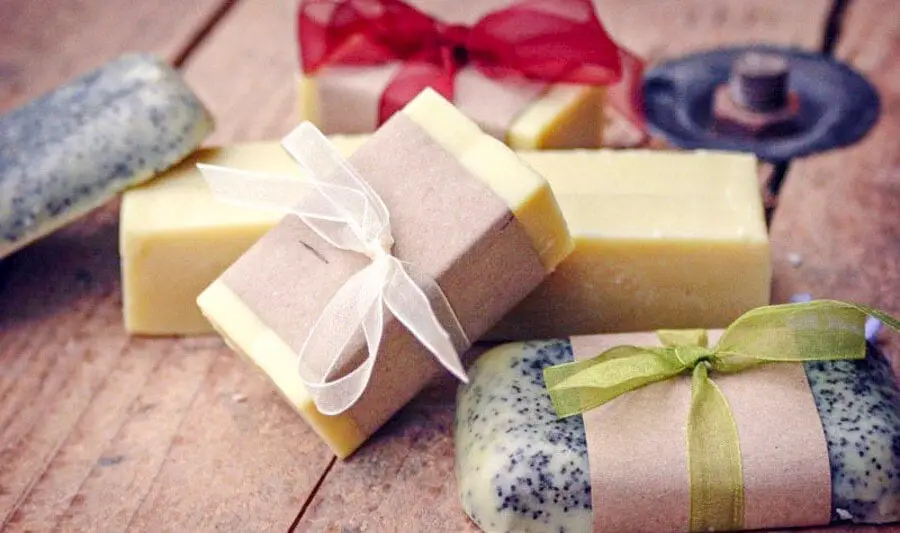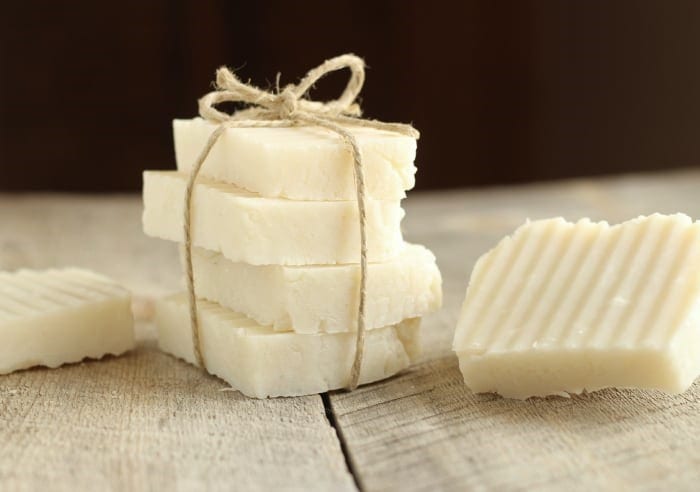
One of the best things about soap making is it can be done at home easily and creatively. Even with the use of lye, a harmful substance, with enough care and attention, it wouldn’t be hard to prevent any probable accidents. That is why a lot of people resorted to soap making at home.
There are solely lists of advantages you can get when making it. First, soap making homemade allows you to use all-natural ingredients that are safe and good for your skin.
Some skin problems such as oily, dry, or sensitive skin can be remedied using different soap, making homemade recipes.
Second, it is cheap and easy to do. You just need a couple of ingredients, and you are good to go. Some of these things can even be found at your home. Thus, you won’t have a hard time getting them.
Learn the different recipes on soap making homemade, which are easy and fun to do.
Cold Process Soap Making at Home

The cold process is one of the widely used soap making processes since it is easy and quick to do. The processing time won’t take long, but the curing will take weeks. So even though it is done quickly, you need to wait for weeks before you can use your soap.
Cold Process Soap Making Reminders
These reminders will help you make cold process soap easier and more fun with less to no mistakes done.
- Hundreds of recipes to choose from
You will never run out of soap recipes. There are some made specifically with the right ingredients to address problems such as dry and sensitive skin. Take time to search online on some of the best recipes you can do at home, and you will see a world of wonders in soap making at home.
- Easy and Cheap Soap Molds
You can choose to save money on soap molds, use old cartons or milk boxes instead. These will hold the mixture until they solidify. There are likewise other silicone, plastic, and wood soap molds available in the market.
- Be careful with Lye
Lye, as said, is a very harmful substance, you need to be extra careful when handling it. Wear gloves and safety precautions to make sure you keep yourself protected. Use the right lye container. Avoid those thin plastics that will easily get melted or glass containers that may crack under the heat. Instead, use stainless steel and other heavy-duty plastics.
- Use the correct supplies
You will need supplies such as scale, thermometer, spatulas, and mixing containers. Make sure you use the correct ones to avoid any mishaps or a mistake on the ingredients. Keep these supplies ready to use and near you.
Cold Process Soap Making Recipe
Learn one of the most basic and easiest cold process soap making recipes. In this recipe, you will be using the most common essential oils used to create a solid and firm soap that gives a creamy lather. In this recipe, you will need the following key ingredients:
- Lye
- Coconut oil
- Olive oil
- Palm oil
- Distilled water
First, get everything you need. Put all your needed mixing containers, spatulas, ingredients, thermometer, and scale ready and on your work table. This way, you wouldn’t spend time finding other things while in the middle of mixing the ingredients.
When the tools ready, you can start preparing your molds. If you haven’t bought the silicon and ready to use colds, you can get a small box and cut it into half. It will act as a soap mold. Line it up with freezer paper, and it’s ready to use.
Wear your mask and gloves. These will help you protect yourself when handling lye.
Second, start the soap making recipe by adding the lye into the water. Stir the mixture lightly until all the lye dissolves in the water, and it turned clear. Let it cool after. Be careful when doing this since lye is a harmful substance.
Third, combine all the oils needed: pal, coconut, and olive. Check the temperature of the lye mixture and the oil until they reach the needed temperature for the recipe. For this one, they need to be around 120 degrees Farenheight.
Using a stick blender, blend the oils to release the bubbles that are trapped. When the bubbles are no longer rising on the surface, combine the lye and pour it gently into the oil mixture. Turn on the stick blender again and mix them until they turn into a creamy yellow hue. Once it gets thicker, the mixture has blended well. Check the trace to see if it’s ready. When done, you can pour in the soap mixture into the soap mold and let it cool off.
Let it be until they hardened. You can leave it for a couple of days. Cut them into bars, and leave it to cure for four to six weeks. After then, you will get to enjoy your soap.
Hot Process Soap Making at Home

The hot process is a type of soap making. This is likewise widely used. It is proven, effective, and easier. There is a need to use heat, so extra care is needed.
Hot Process Soap Making Reminders
Make sure to check the few reminders you need to know before trying the hot process soap making at home.
- Be careful with the heat
You will be working with your stove. Make sure you get the right heat and temperature to avoid burning the soap mixture and causing accidents. Get the essentials needed to keep yourself safe.
- Waiting Game
It will take you more or less two hours of mixing and stirring the soap. You need to be very patient when doing so. The hot process needs constant checking, so you need to keep yourself free of other things other than the soap making.
- Store and Cure
You can use the soap immediately, or you can choose to cure it and wait for a couple of weeks. Make sure the soaps are stored in a safe, cool, and dry place. Put in in a container or tray. Put a piece of paper towel on the container first before putting the soap for curing.
Hot Process Soap Making Recipe
Learn the basic recipe and ingredients of soap making using the hot process. In this recipe, you will need the following:
- Lye
- Water
- Olive oil
- Coconut oil
- Essential oils
First, melt and mix 10 ounces of olive oil and 20 ounces of coconut oil together in the pan. Heat and let the oil melt and mix together. Once it’s done, set it aside to cool down.
In a second mixing container, mix lye and water. Slowly add the lye while stirring it continuously. Make sure the lye dissolves completely, mix the ingredients into the oil mixture. Use your stick blender to continue stirring and mixing everything together. Once it is in the right consistency and the right ‘trace’, stop stirring at continuing to heat it under low fire. You can check it once in a while and stir using a spatula this time.
Next, leave it on the heat for forty-five minutes to one hour. While it is still cooking, you can prepare the soap mold. Once it’s done, pour the mixture with the help of the spatula.
Then, leave it for twelve hours to one day until it is completely dry and set. Lastly, you can cut it into bars and leave if for another day to allow curing and hardening. After that, it is ready to use.
Conclusion
The cold and hot soap making homemade process offers advantages. The choice depends on which works well with you. It is also good to try one recipe and the other to see and differentiate the two. This way, it will be easier for you to decide.
There are even soap making homemade recipes that are kid-friendly. You will have a fun time with your children while doing a soap, making homemade recipes that are completely safe. There are melt and pour recipes that also includes various soap colorant to get creative and make colorful soaps
Soap making at home is made easy with the right tools, countless of amazing recipes, as well as the different all-natural ingredients you can use. Soap making homemade processes allows you to take better care of yourself, use organic ingredients, and give yourself the hobby and time to get better choices in life. Now, on your next hobby hunting, try soap making, and you will surely enjoy it.
